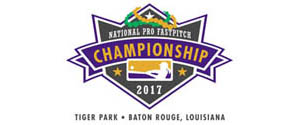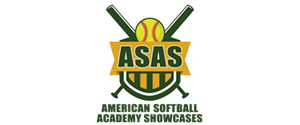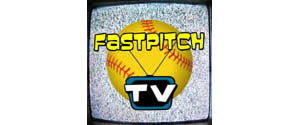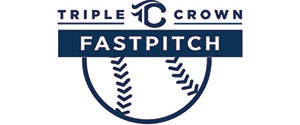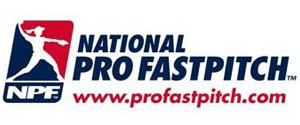Runner misses home plate very obviously to me and the umpire. He does not make a call safe or out the girl continues into the dugout while I am telling pitcher to tag her. No tag is applied before she get in the dugout. My self and the pitcher tell the umpire the base was missed. I assumed this to be a dead ball appeal as my pitcher walked back to the circle. Is that the proper appeal? He forced us to go through the step on the rubber, step off the rubber, throw to the catcher, and step on home plate. He then called her out. Proper appeal is a little fuzzy in the book. How should I have handled it?
Thanks
The Umpire Corner
Sean Jordan wrote:Runner misses home plate very obviously to me and the umpire. He does not make a call safe or out...
Good for him! He shouldn't be calling anything on the missed base unless/until a proper appeal is made.
Sean Jordan wrote:...the girl continues into the dugout while I am telling pitcher to tag her. No tag is applied before she get in the dugout.
If there would have been a tag, accompanied with a verbal appeal like, "She missed the plate", then that would have been a valid live ball appeal.
By the way, the runner could have gone back and touched the plate at any point up until she stepped into the dugout. Once she entered a dead ball area, she lost her right to correct her baserunning mistake.
Sean Jordan wrote:My self and the pitcher tell the umpire the base was missed. I assumed this to be a dead ball appeal as my pitcher walked back to the circle.
The ball isn't dead just because the pitcher "walked back to the circle". You or your player should have first requested "time" and waited until it was granted. Then the ball would be dead and you could make a dead ball appeal.
Sean Jordan wrote:Is that the proper appeal? He forced us to go through the step on the rubber, step off the rubber, throw to the catcher, and step on home plate. He then called her out. Proper appeal is a little fuzzy in the book. How should I have handled it?
As noted, a dead ball appeal must be made when the ball is actually dead. Wait for all play to stop, then request time.
Now, the umpire seems to not have a good handle on how a dead ball appeal works. None of that "step on the rubber, step off, throw to the base, tag the base" stuff is necessary to make a dead ball appeal. All you need is to have an infielder, with or without the ball, verbally state to the umpire what is being appealed.
The appeal process might vary a little bit depending on which rule set you're using. Some require a player to make the appeal, some allow it to come from a coach. I'm not aware of any that require the "step on rubber/throw to base/tag base" routine, which is really something from baseball.
So...which rule set were you playing under and which part is "fuzzy" in their rule book?
Click Here >>> To Visit The Glove Shop On-Line
-

Bretman - Posts: 316
- Joined: Mon Mar 24, 2008 10:50 pm
Bretman wrote:Sean Jordan wrote:Runner misses home plate very obviously to me and the umpire. He does not make a call safe or out...
Good for him! He shouldn't be calling anything on the missed base unless/until a proper appeal is made.
Bad for him.
Sean Jordan wrote:...the girl continues into the dugout while I am telling pitcher to tag her. No tag is applied before she get in the dugout.
If there would have been a tag, accompanied with a verbal appeal like, "She missed the plate", then that would have been a valid live ball appeal.
Or simply tagging the plate with possession of the ball while indicating an appeal is being made would also work.
By the way, the runner could have gone back and touched the plate at any point up until she stepped into the dugout. Once she entered a dead ball area, she lost her right to correct her baserunning mistake.Sean Jordan wrote:My self and the pitcher tell the umpire the base was missed. I assumed this to be a dead ball appeal as my pitcher walked back to the circle.
The ball isn't dead just because the pitcher "walked back to the circle". You or your player should have first requested "time" and waited until it was granted. Then the ball would be dead and you could make a dead ball appeal.Sean Jordan wrote:Is that the proper appeal? He forced us to go through the step on the rubber, step off the rubber, throw to the catcher, and step on home plate. He then called her out. Proper appeal is a little fuzzy in the book. How should I have handled it?
As noted, a dead ball appeal must be made when the ball is actually dead. Wait for all play to stop, then request time.
Now, the umpire seems to not have a good handle on how a dead ball appeal works. None of that "step on the rubber, step off, throw to the base, tag the base" stuff is necessary to make a dead ball appeal. All you need is to have an infielder, with or without the ball, verbally state to the umpire what is being appealed.
The appeal process might vary a little bit depending on which rule set you're using. Some require a player to make the appeal, some allow it to come from a coach. I'm not aware of any that require the "step on rubber/throw to base/tag base" routine, which is really something from baseball.
So...which rule set were you playing under and which part is "fuzzy" in their rule book?
Speaking ASA, even if the defense doesn't request time, umpires are instructed to suspend play the moment they see a pitcher attempt an appeal from the PP and accept a dead ball appeal.
To me, it sounds like you have an umpire more familiar with the little ball game or an organization which is more baseball rules based than softball. It happens and hopefully if you addressed your concern with the umpire or his supervisor at the game, he will investigate and learn the proper appeal process for softball, assuming (as BretMan suggested) this isn't an organization which has some different ways of doing things.
- MTR
- Posts: 2317
- Joined: Thu Jan 03, 2008 5:21 am
MTR wrote:Bad for him.The umpire should have hesitated and the made a "safe" call once it was obvious the runner was not trying to return and touch the plate and the defense was not attempting to tag the runner.
OP did not state that a play was being made at the plate when the base was missed. So why would the umpire be making a safe signal if there was no initial play/tag attempt to rule upon?
Agree that the umpire should hesistate, then give a safe signal, if there was a missed tag AND a missed base.
Click Here >>> To Visit The Glove Shop On-Line
-

Bretman - Posts: 316
- Joined: Mon Mar 24, 2008 10:50 pm
Sean Jordan wrote:Runner misses home plate very obviously to me and the umpire. He does not make a call safe or out the girl continues into the dugout while I am telling pitcher to tag her. No tag is applied before she get in the dugout. My self and the pitcher tell the umpire the base was missed. I assumed this to be a dead ball appeal as my pitcher walked back to the circle. Is that the proper appeal? He forced us to go through the step on the rubber, step off the rubber, throw to the catcher, and step on home plate. He then called her out. Proper appeal is a little fuzzy in the book. How should I have handled it?
Thanks
Softball rulebooks allow BOTH live ball appeals and dead ball appeals. Sounds like you really didn't do either, and he really didn't know how to handle anything but the baseball appeal process (which actually only applies if the the ball WAS made dead).
The simplest appeal in this case would have been the original live ball appeal. Your pitcher, holding the ball, and DIDN'T tag the runner should simply go stand on home with the ball and tell the umpires she is appealing the runner missed home. Live ball appeal can tag either either the runner or the missed base, must verbalize what she is appealing. (By the way, YOU saying it while the ball is live only tells the runner to go back; coaches cannot make live ball appeals, and cannot make dead ball appeals in ASA, either, just high school and NCAA allow the coach to do what a player should be taught.)
Asking for time allows the players to make a dead ball appeal; any infielder, with or without the ball, simply tells the umpire that the team is appealing that runner missed home. The only reasons to refuse that appeal are 1) if the ball isn't dead and can't/shouldn't be made dead, because there is another runner and the ball isn't in the pitcher's possession in the circle, meaning play could still happen, 2) the wrong person (ie coach, parent, or outfielder) is making the appeal, or 3) the umpires doesn't understand the appeal process. And, as noted before, if the umpire grasps that the team is attempting a dead ball appeal, and the rules allow, he should grant time without that being a separate request.
All that said, if he was refusing the dead ball appeal on the premise that the ball was alive, that should allow the live ball appeal (player with the ball touching the base that was missed and verbalizing the appeal) without the nonsense of stepping on, stepping off, etc. The appeals processes in softball are intentionally designed to NOT deal with that garbage.
-

UmpSteve - Premium Member

- Posts: 461
- Joined: Fri Aug 21, 2009 10:38 am
Bretman wrote:MTR wrote:Bad for him.The umpire should have hesitated and the made a "safe" call once it was obvious the runner was not trying to return and touch the plate and the defense was not attempting to tag the runner.
OP did not state that a play was being made at the plate when the base was missed. So why would the umpire be making a safe signal if there was no initial play/tag attempt to rule upon?
You are absolutely correct, I over-read the situation. There needs to be a play.
- MTR
- Posts: 2317
- Joined: Thu Jan 03, 2008 5:21 am
6 posts
• Page 1 of 1




